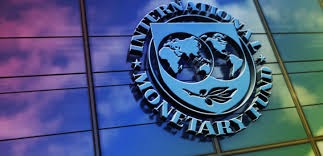The International Monetary Fund (IMF) has excluded Nigeria
from the list of Africa’s fastest-growing economies.
The IMF listed Benin, Côte d’Ivoire, Ethiopia, Rwanda, and
Uganda as the fastest-growing economies on the continent in its Regional
Economic Outlook report for sub-Saharan Africa, launched on Thursday in
Washington DC.
The report, launched at the ongoing annual meetings of the
IMF and World Bank, said the region has demonstrated remarkable resilience to
“a series of major shocks over the past several years”.
“…and it features several of the world’s fastest-growing
economies, including Benin, Côte d’Ivoire, Ethiopia, Rwanda, and Uganda,” the
report reads.
“However, economic performance remains markedly weaker in
resource-intensive countries and in several conflict-affected states.
“In these economies, which represent most of the region’s
population, gains in income per capita remain modest—around 1 percent a year on
average, and less in the poorest countries.”
Furthermore, the IMF said economic growth in sub-Saharan
Africa is projected to remain at 4.1 percent in 2025 — the same rate as in 2024
— with a modest increase expected in 2026.
REFORM EFFORTS IN NIGERIA, ETHIOPIA
The organisation said forecasts have increased marginally
since April, reflecting continued progress toward macroeconomic stabilisation
and reform initiatives, including in Nigeria and Ethiopia.
The IMF noted that fiscal fragility remains a major
vulnerability across much of the region, particularly among lower-income
countries, noting that while average public debt ratios have stabilised, they
remain high.
“And the debt-service burden, in terms of interest payments
relative to fiscal revenues, has increased steadily, rising far above its level
in other regions and crowding out priority development expenditures, for
instance in Kenya and Nigeria,” the organisation said.
‘INFLATION TO REMAIN IN DOUBLE-DIGITS TILL YEAR END’
The lender said monetary and external vulnerabilities also
“affect parts of the region, particularly low-income countries (LICs)”.
“Median inflation has eased from over 6 percent at the end
of 2023 to around 4 percent, driven by lower global food and energy prices
alongside tight monetary policies,” the institution said.
The organisation said inflation is projected to remain in
double digits through the end of 2025 in roughly one-fifth of the region,
including Nigeria, Angola, Ethiopia, and Ghana.
“External buffers also remain under pressure and in many
cases need to be rebuilt,” the IMF said.
“In roughly one-third of the region, international reserves
fall short of the recommended three months of import cover; in LICs, median
reserve levels have declined to about 2.5 months of imports, reflecting
exchange rate interventions in support of domestic currencies.”
The lender acknowledged the recent tax reforms implemented
in Nigeria, saying the decline in Nigeria’s inflation rate is due to tighter
policy measures and adjustments in the exchange rate.
Click to signup for FREE news updates, latest information and hottest gists everyday
Advertise on NigerianEye.com to reach thousands of our daily users









